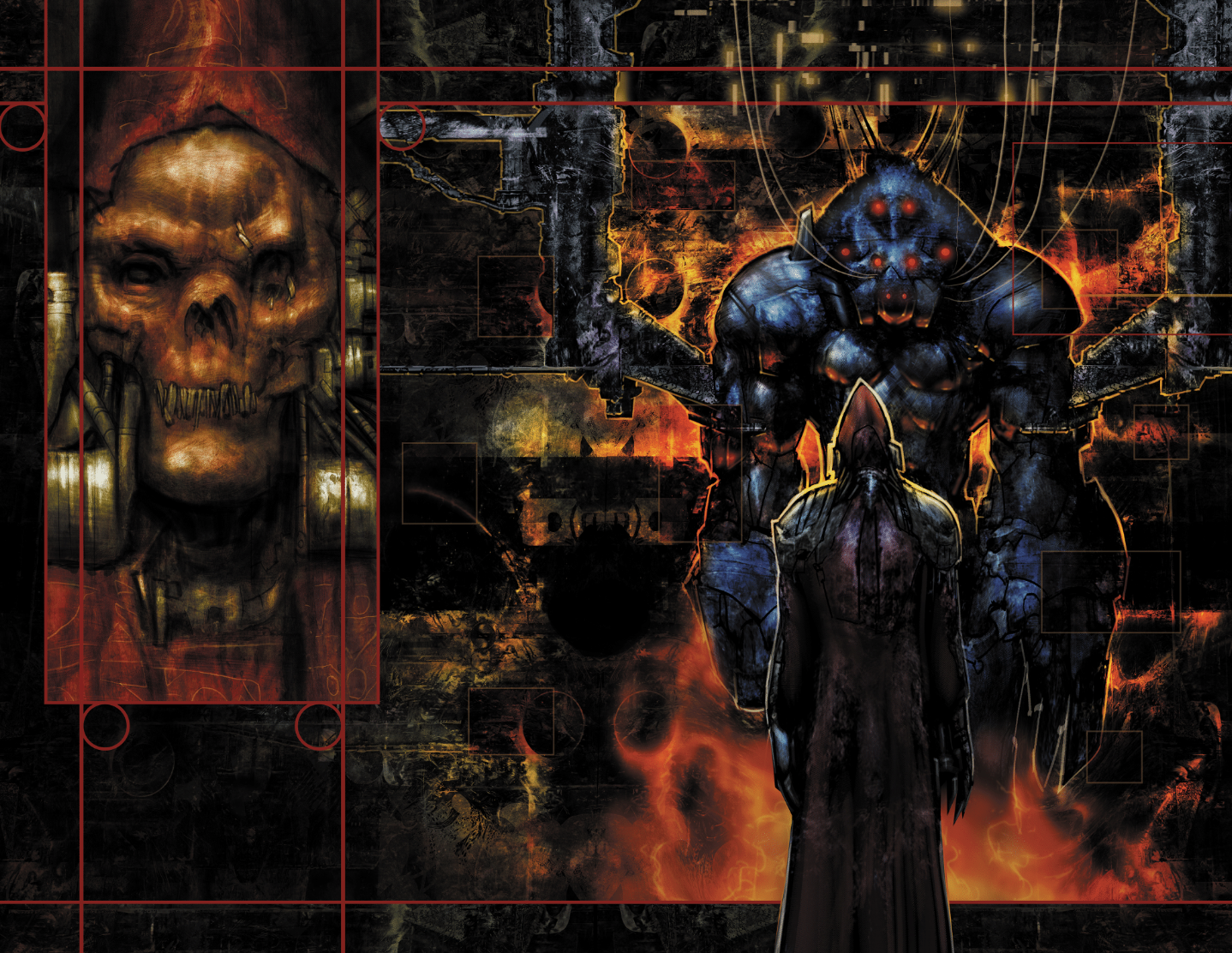When it comes to stellar comic book art, few mortals can match the impressive work of British-born Liam Sharp, whose enchanted pencils have graced such hit titles over the decades as “Death’s Head,” “Cap Stone,” “The Brave and the Bold: Batman and Wonder Woman,” “The Green Lantern,” and “Batman: Reptilian.”
Now this award-winning creator has composed his magnum opus with “Starhenge” (2022), a mind-bending sci-fi odyssey from Image Comics guaranteed to leave your widened eyes glassy and your mind adrift in the immersive plotline.
Think “Foundation” meets “Excalibur” and “The Terminator” and you might get close to Sharp’s epic story of a future Merlin who travels beyond the gulf of space and time on a mission to rid the universe of time-hopping, magic-destroying robots back in ancient 5th-century Britain.
“Starhenge” is a visually arresting six-issue miniseries written and drawn by Sharp that makes for the perfect summer event title, transporting readers across the cosmos with its delirious sci-fi concepts and compelling mythology-based narrative.
Space.com spoke with Sharp about how “Starhenge” emerged as a project, how his perceptions of Arthurian legend merged seamlessly with sci-fi traditions, how he settled on certain design techniques, and what he hopes fans will connect to with this new ambitious undertaking.

Space.com: What was the genesis of “Starhenge” and what did you draw from creatively?
Liam Sharp: It’s a big old story really. It’s got quite a long gestation period. I have a big passion for mythology in general and that goes back to when I was a kid, watching things like “Jason and the Argonauts.” Anything with Romans and swords and gods and stop-motion animation.
When I got the opportunity at school to do classical civilizations I jumped at it, but along the way I thought that this was all Roman and Greek stuff and I don’t know anything about stuff that’s close to home. There was only the common myth we’d see growing up, whether it was film adaptations or musicals it was always Arthur or Excalibur, which I loved. But I thought I really don’t know the roots of the Arthur story, how historical it is or how it’s tied to Celtic mythology. So it opened a bunch of doors for me and it led me to Welsh and Irish myths and all the Lady Gregory stuff and so I got very embedded in that kind of material.
And I discovered a book called “The Quest for Merlin” by Nikolai Tolstoy, who was Leo Tolstoy’s grandson. It was a deep dive into the history of Merlin and his thesis was to try and find out whether Merlin existed as a real character. Through that book I discovered Geoffrey of Monmouth and that was the earliest Merlin/Arthur version and it’s different than later versions.
Two things I really love are science fiction and fantasy and I thought about the idea of T.H. White and his “The Once and Future King” and the notion that Merlin was born in the future and died in the past. That gave me the whole idea of if he’s from the future, why is he coming to the past and what is that mission. So that really set the ball rolling. Once I had that hook, I was in.
After finishing up “Green Lantern” I had a window of opportunity to do this book so I just jumped on it. I wanted to create a big playground to play in. Hopefully this will have long legs and it will be something I can do for many years to come.
Related: Exclusive: The hunter becomes the hunted in Marvel Comics ‘Predator #1’ relaunch

Space.com: Can you take us on a speed run of the plot for “Starhenge?”
Sharp: It’s essentially “Excalibur” meets “The Terminator” via “Doctor Who.” It’s got epic magical fantasy. It’s got hard sci-fi. But right in the middle is that nerdy subculture “Doctor Who” stuff to keep it bouncing along and hopefully reasonably entertaining.
Basically in the future, humans sort out the problem of intergalactic travel and they manage to start populating the various planets in Goldilocks zones around the universe. One of them has an ancient AI that wiped out all the organic life on that planet, and when it wakes up as humans land there, it’s shocked by more organic life and begins the process of wiping that out. This war starts between the ancient AI and the great human expansion. What they realize is that the one thing they can’t fight is magic.
In the original future there was magic and it’s slowly disappearing. But the Ur Queen, this character who’s the most plugged-in human in both the physical world and magical meta-world, she sends herself a sort of message in a bottle in the astral plane warning people that magic has disappeared and that it’s the one thing they could fight the AI with since it does not compute.
They’re sending robots through time to wipe out the various threats of magic and she needs to stop that by sending these Merlins and Mer-seeks back in time to protect magic where it’s being killed. And one of those places is the 5th century where magic was still fully embedded.

Space.com: How did you decide upon the design elements and epic tone of “Starhenge?”
Sharp: It’s been a long journey. For the last six issues of DC’s “Green Lantern,” we’d been playing around a lot with techniques all the way through there. I was talking to Grant [Morrison] and we loved the idea of the whole series not just being an exploration of time and space, but that there’s Green Lanterns of viruses, of the spectrums, of art, of comics, of anything. We were fully exploring our love of particular eras of comics.
Grant was very invested in the John Broome era and we did the homage to the Neal Adams era. As we went on we looked at the fantasy stuff we liked, the ’70s illustrators and we looked at pulp. A bit of Frazetta and then we got to the last couple of issues when we almost did an homage to “Batman: Arkham Asylum” and started referencing Dave McKean a bit. Which was nice because this was Grant’s last DC book and it would bookend with one of his very first.
The other thing that occurred to me along the way, because people started enjoying it, it went against the tenets of what’s generally accepted in comics, that you need to find a style and stick with it and define yourself by it. Which is something I’ve never liked because I think it’s anti-art.
I’m very restless as a creator so every now and again I’d feel I had a style that was mine and I’d get bored of it very quickly. I want to keep exploring until I find something that’s satisfying.

Space.com: What do you hope readers take away from “Starhenge?”
Sharp: I hope people are surprised and that it’s more fun and more accessible than on the surface it might seem. And for readers that tend to shy away from sci-fi comics, that they give it a shot and find it more light-hearted and entertaining and relevant than they imagined.
Image Comics’ “Starhenge #1” lands on July 6, 2022.
Follow us on Twitter @Spacedotcom and on Facebook.

